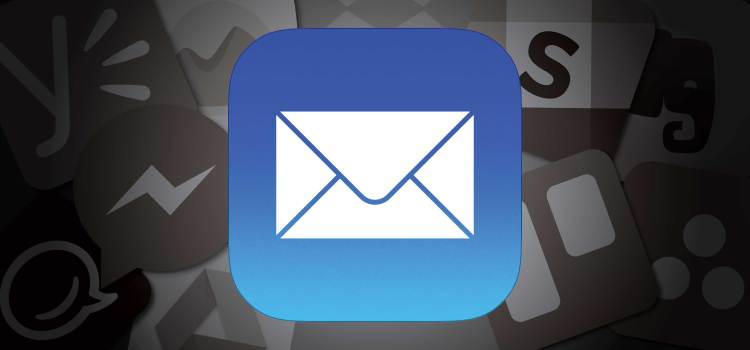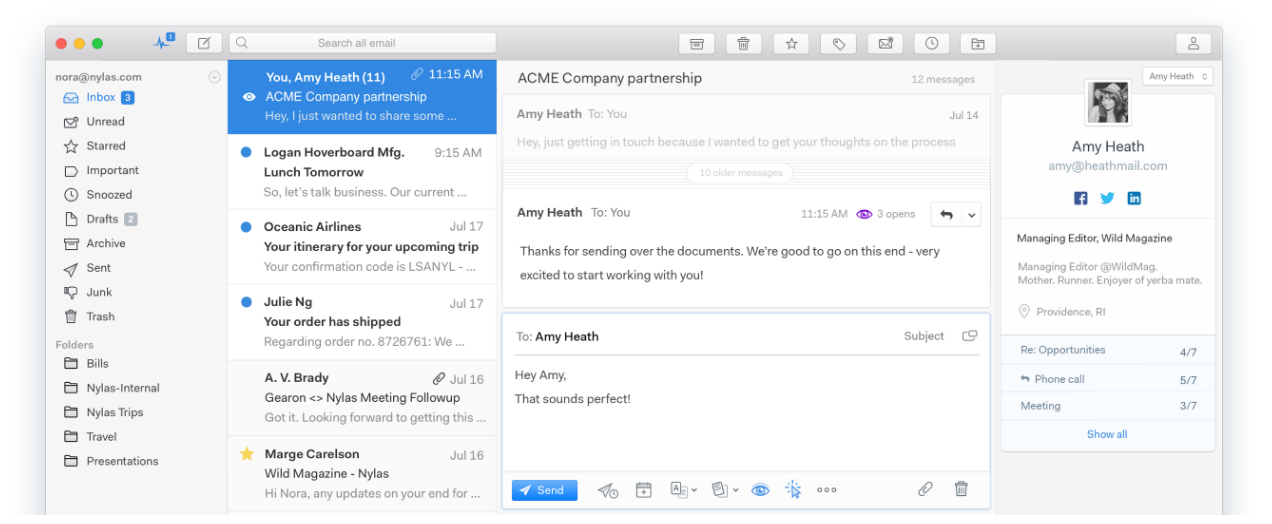An evolving inbox is not without its challenges
As the volume of email has increased over the past 45 years, service providers are not just adjusting their search strategy but also evolving how the inbox looks. David Robinson, Yahoo’s vice president of design for Flickr, Messaging, and Mail, said user behaviors have changed.
“Where email is interesting right now is in business and spam — not spam like bad emails. When people refer to spam, they refer to excessive [promotional] emails. Behavior today is that [people] get all this stuff in their inbox and try to triage it. There’s an opportunity for Yahoo to look at business mail and reshape the inbox to see what it means. It’s communication between a person and a business, not person-to-person,” Robinson said.
Robinson believes that email is the the primary communication channel between individuals, businesses, and groups. “As messaging busts, it’s the system that remains relevant,” he said.
But he acknowledges that the user experience with email is always changing. This is an area that falls under Robinson’s oversight, along with Yahoo’s own messaging app. To complicate matters more, his team has to deal with how it operates on both the web/desktop and on mobile devices. “Yahoo Mail is the most difficult to change,” he explained. “When designing something, you introduce it to a billion-plus users. Every time you change something, there’s a rabid base of users with an opinion. When you give them something, they learn, and when you change something, they give feedback.” Robinson explained that moving the Send button just six pixels to the right could result in people being unable to find it and complaining.
“If you look at mail, it’s an ancient system, and [people] like it. When you fix something in the interface that’s broken, you’ve ‘broken’ it for the user, as they’ve come to expect it. When users revolt, you’ll have to communicate to the user base why this was changed,” he added.
Improving email clients requires more meticulous effort than updating messaging apps because the changes have far-reaching implications that can’t easily be solved. “You have to take into account the context, such as the message type (e.g. what are you doing?), the location (e.g. where are you?), and how you’re reading the message. It introduces complexity of design that’s crazy,” he explained.
But he recognizes that the inbox is no longer something that lives in isolation. It needs to blend in with other communication tools, and this is the next challenge Robinson’s team is undertaking at Yahoo. “Imagine a world where messaging and mail converge,” he theorized. “It could be a design challenge…If I’m a business person and use email to communicate, I could pick components off the shelf to make it work for professional life. Messaging, mail, and communication tools would be configurable for a user’s need. A modular aspect for digital products: I think that’s the way to go.”
Love-hate relationship
Communication and productivity app providers often boast about how they’ll make our days more efficient and eliminate the need to send countless emails. While reducing the number of messages that flood our inbox is certainly appealing, at the end of the day, all of these services still rely on your email address.
Take Twitter, for example. It’s a social media platform that appears to be completely based on the web, but it still has an investment in email. In 2013, I spoke with Twitter’s postmaster (something LinkedIn also has), someone dedicated to managing how emails were used with the system, largely through notifications. The man behind this was Josh Aberant, and he described email as being the lifeblood of social networks in that it “reminds, informs, and engages users all at the same time” from beyond the confines of Twitter’s service. The service currently sends at least 22 different email notifications to users, including when you receive a direct message, a reply, a retweet, someone favorites your tweet, follows you, or anything else happens that’s related to what you’ve shared.
Having someone overseeing email deliverability is important because getting into someone’s inbox means engagement can continue even when that person is no longer using the app. It’s the logical step to helping users overcome fear of missing out, or FOMO. So while companies behind apps may be perceived as shunning email, that’s easier said than done.
The truth is that apps, even those that are based around communication, need email because native push notifications aren’t enough. “Mail works with every app, every operating system. It’s completely accessible across all systems,” Bonforte explained.
Another sign that email isn’t dead is that startups continue to try to innovate in the space — just look at Handle, Polymail, Boomerang, Front, and many others. These emerging companies offer interesting takes on the email space, and incumbents (and even those in adjacent areas) have made acquisition bids — e.g., Yahoo-Xobni, LinkedIn-Rapportive, Microsoft-Accompli, and Dropbox-Mailbox.
Evolution of email
“There’s an incredible amount of data in email that’s valuable, but it’s locked down right now,” said Michael Grinich. As the cofounder and chief executive of Nylas, he’s joined the growing list of companies looking to evolve email. “Developers can’t build on top of it, and end users can’t access it,” he said. “The tools you have are 15 years old — they haven’t changed in over a decade.”
That’s why Grinich started Nylas, a platform built around email-powered applications. Think of it like Twilio, but for business email communication. “Email is the hub of your communication,” Grinich stated. Nylas offers an open source desktop mail app called n1 that is an alternative to Outlook, Thunderbird, and Gmail, and can be integrated with third-party extensions. It can be adapted in whatever way administrators feel works best for employees. The company also has a cloud-based offering that Grinich described as the “foundation for a new email experience” and which provides additional flexibility to personalize the email workflow for the entire firm.
He describes this medium as a “universal system,” explaining, “When you reach out to someone, whether it’s a reporter, sales prospect, candidate you want to hire … a partner or vendor, you reach out through email.”
“The frustrations with email are related to the fact that over the past 10 to 15 years, the end user email tools haven’t gotten better like other tools,” he continued. “Email marketing has progressed a great deal [in the same time span], but the same amount of innovation hasn’t happened for the end user, especially in the workplace.”
Like Bonforte, Grinich thinks there’s going to be a renaissance, and he believes Nylas can usher this in by opening email up to developers. “What we’re trying to do is so novel — open-sourcing things, building a platform first, and having a huge audience of developers. If the email space were bigger, people wouldn’t think about us competing with other email products. We never claimed what we’re doing is an email killer or the best thing in the world for everyone or it’s going to be competitive with any of these email systems. What we’re trying to build is a focused version of a product for a subset of users.”
While it’s difficult to offer complete customization to billions of users, it’s an interesting premise to give businesses that capability. Perhaps individuals will eventually be able to really tailor their inbox to their needs. Grinich said that Nylas has considerable traction, with more than 3 million GitHub projects, something he called “unprecedented for a mail app.”
“Incumbents are the ones that reach out to us the most,” he said. “They’re looking for a place to differentiate and provide value to end users. The ones that reach out the most are Internet Service Providers (ISPs) and those that work with them. Folks that aren’t the big mail providers are looking for ways to innovate in the space and partner with [others]. That’s a really exciting opportunity in that you’re not tied with Gmail, Yahoo, or Outlook, but have a platform across all ecosystems.”
“For an interface to customize itself to a user’s need automatically will be an interesting thing for communication,” Robinson concluded.



